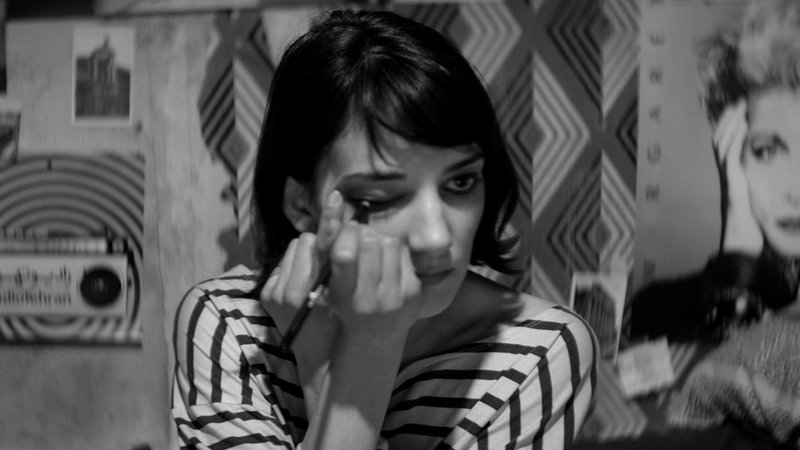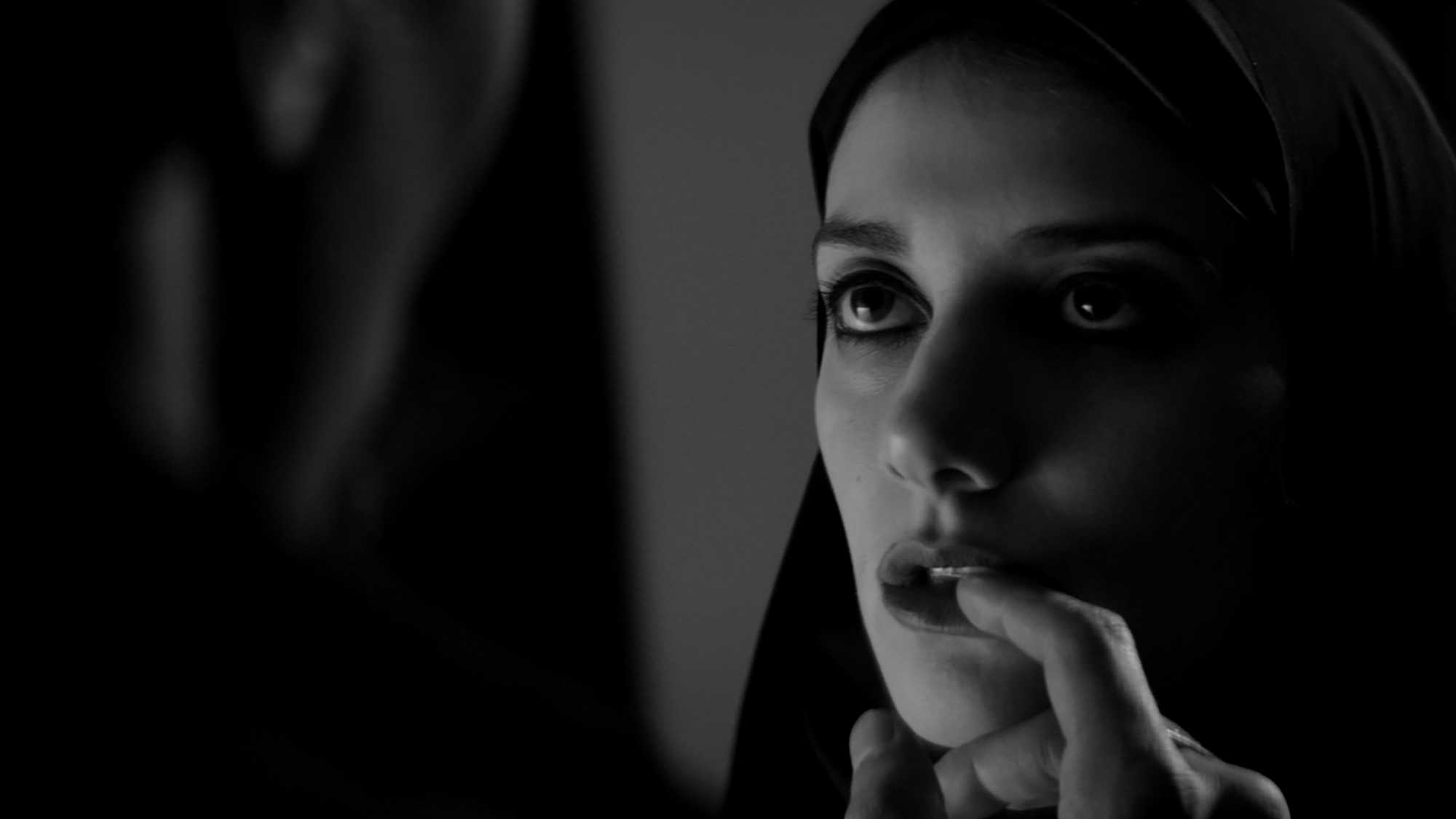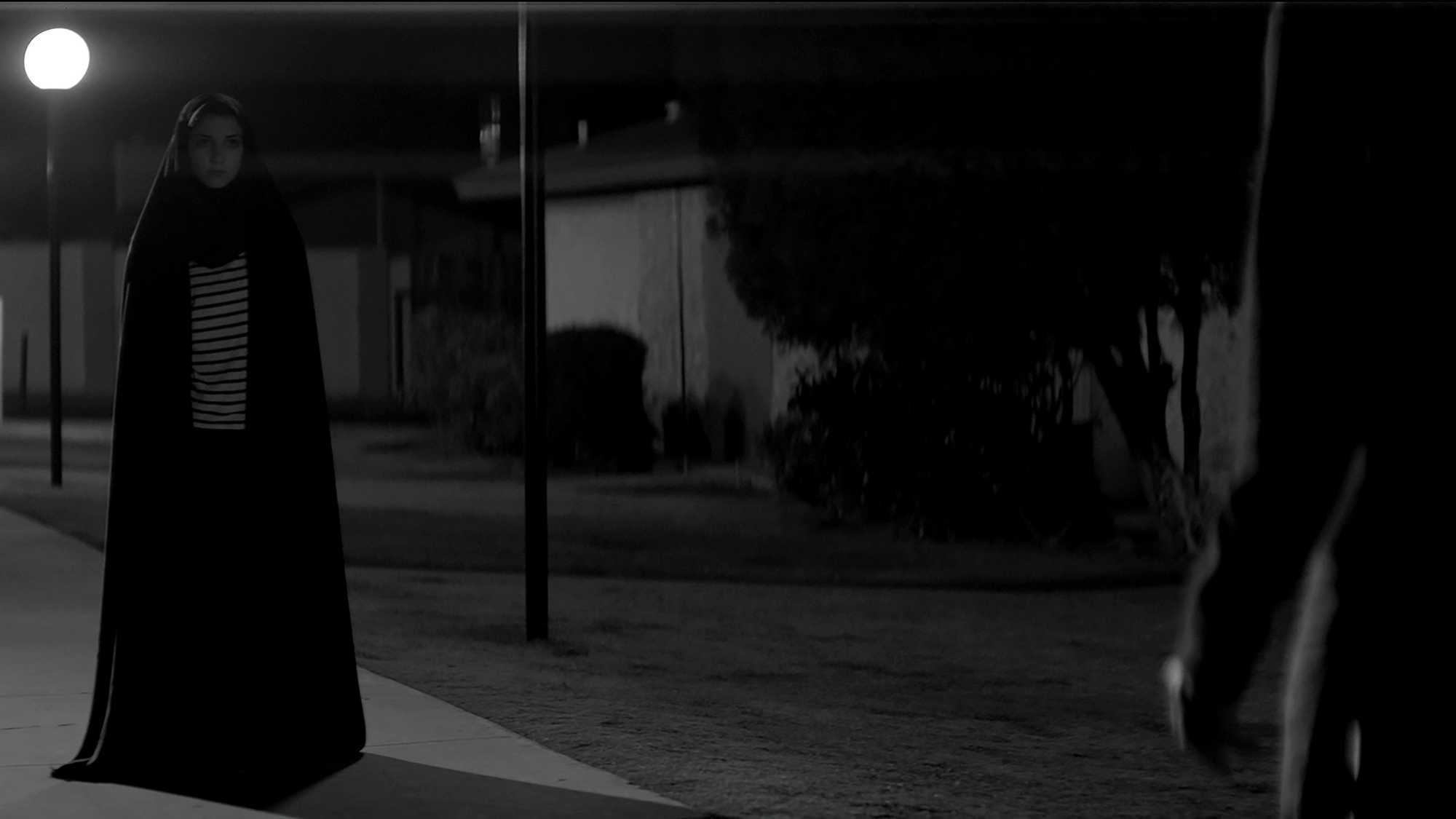Our chador-wearing heroine walks the night-time streets of Bad City sinking her teeth into those who deserve to die. Outrageously languid, this new-school vampire movie is a triumphant first feature for Ana Lily Amirpour.



As seductive and foreboding as its title – a simple, declarative sentence that encompasses many mysteries – Ana Lily Amirpour’s debut feature reanimates and restores the sexiness of the vampire movie.
Screened as part of NZIFF 2015
A Girl Walks Home Alone at Night 2014
If you like female characters on the giving rather than receiving end of vampiric violence, then Ana Lily Amirpour’s debut feature is for you. The title character, mesmerising in her stillness, slides the empty night streets of Bad City, a mythical Iranian ghost town that looks suspiciously like California (where it was shot). Wearing a chador and hipster loafers, the Girl (Sheila Vand) watches politely while a variety of male/female interactions play out – everyone speaking in Farsi. There is a retributive justice in the way the Girl attacks, and we may guess at her back story through the title.
Our hero, the streetwise but harmless Arash (Arash Marandi), who is trying to care for his junkie father, meets the Girl whilst drug-addled on the way home from a costume party. In a totally overdue reversal of the power dynamics between men and women at night, these two outsiders are drawn together through their love of alt-rock and their isolated worlds.
Amirpour’s pointed and humorous gender politic is present throughout this masterpiece of image, story and experiential filmmaking, which visually quotes so widely that you will feel you are watching Lynch, Tarantino, Hitchcock, Buñuel and Maya Deren. Shot stunningly in black and white by Lyle Vincent, this is not to be missed on the big screen, with its glorious soundtrack, outrageously languid scenes, blood, drugs, oil rigs... this movie’s got the lot. — JR
